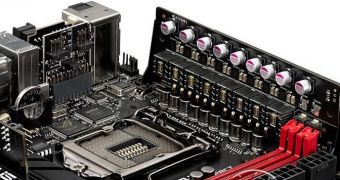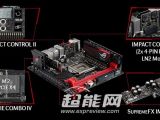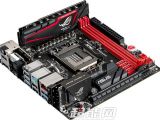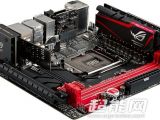The mini-ITX form factor is not one that usually provides a high potential for performance, but mainboard and PC makers have still done all they could to overcome the clear limitations of the size. ASUS may have just done the best job of it ever.
You see, there is one means of enhancing functionality that mini-ITX makers and users can still take advantage of without forcing the use of a larger case and defeating the entire purpose of the small form factor.
That means that method is the use of daughterboards. Essentially add-in cards that ship with the main motherboard by default and plug vertically into specially created slots.
Well, maybe not a specially created slot for networking, since Wi-Fi/Bluetooth daughterboards usually go in the PCI Express slot. Still, if there are any others, the mainboard maker has to jump through a few hoops to get everything wired properly.
ASUS managed to include no fewer than five daughterboards in the shipping package of the new Maximus VII Impact.
Based on the Intel Z97 Express chipset, it supports LGA 1150 central processing units, or CPUs for short, including Intel Haswell Core-series.
We'll go over the mainboard's traits first. There's a 24-pin ATX and an 8-pin EPS power connector, a pair of DDR3 DIMM memory slots, a PCI Express 3.0 x16 slot, four SATA 6.0 Gbps connectors, and Gigabit Ethernet.
HDMI and DisplayPort outputs, as well as six USB 3.0 ports and some USB 2.0/1.1 ports are natively available as well.
Now for the daughterboards. One of them holds the 8-phase CPU VRM (voltage regulation module), which is quite strong for a platform of this size.
Another, the ImpactControl II, provides the onboard power/rest, clear CMOS, and ROG Connect buttons. Basically, it makes any mini-PC based on the Maximus VII Impact overclockable.
There's an mPCIe Combo IV board, which brings a mini PCI Express x1 slot to the table (populated with an 802.11 ac WLAN card) and an M.2 slot with PCIe 2.0 x4 link layer wiring.
Fourth, ASUS included the Impact CoolHub, with two 4-pin PWM fan headers and an LN2 mode toggle. Finally, there is the SupremeFX Impact II daughterboard, an audio card with high-end capacitors, headphone amp, ground-layer isolation, and an EMI-shielded 110 dBA SNR CODEC.
Basically, the newcomer is an overpowered, overclocking-prone miniature platform. Unfortunately, the report that exposed the existence of the ASUS ROG Maximus VII Impact did not include a price.

 14 DAY TRIAL //
14 DAY TRIAL // 



